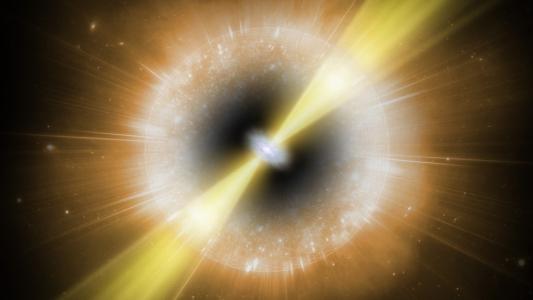Astronomers have finally figured out what happened to the “Chinese supernova,” a bright light that suddenly appeared in the night sky more than 800 years ago, then vanished six months later.
Guest stars: More than 2,000 years ago, Chinese astronomers started reporting the temporary appearance of bright stars in the night sky where no stars had previously been spotted.
It appeared for about six months, during which time it was as bright as Saturn.
They dubbed the visions “guest stars,” and today, we know that they were seeing supernovae — huge explosions caused by the deaths of massive stars.
In 1181, the ancient astronomers reported seeing a guest star — now called the “Chinese supernova” or “SN 1181” — in a specific part of the night sky for about six months, during which time it was as bright as Saturn.
The Chinese supernova: Over the past 1,000 years, there have been recorded reports of just five bright supernovae in our Milky Way, and modern scientists have been able to find remnants of all of them, except the Chinese supernova.
Now, an international team of scientists think they’ve solved the 800-year-old mystery of SN 1181, linking it to a cloud of space dust surrounding one of the Milky Way’s hottest stars.
Parker’s Star: When a star goes supernova, the explosion can propel its outer layer of material into space. There, it can form a cloud of gas and dust called a nebula, which often gives birth to new stars.
“We can study the remnant nebula and the merged star, and a description of the explosion.”
Albert Zijlstra
In 2013, astronomers discovered a new nebula (Pa30) in the Milky Way, and four years later, they spotted a star within it (“Parker’s Star”). This new study connects these two phenomena to the Chinese supernova.
“Taken together, the age, location, reported ‘guest star’ brightness, and recorded visibility for 6 months, shows that Parker’s Star and its surrounding gas shroud Pa30 are indeed the counterparts of supernova [SN 1181],” first author Andreas Ritter said in a press release.
Bonus round: The fact that the Chinese supernova has been linked to Pa30 and Parker’s Star is particularly exciting given that they’re thought to have formed from an incredibly rare Type Iax supernova, which occurs when two dense dead stars merge.
“Only around 10% of supernovae are of this type, and they are not well understood,” researcher Albert Zijlstra said.
“[SN1181] is the only such event where we can study both the remnant nebula and the merged star, and also have a description of the explosion itself,” he added.
We’d love to hear from you! If you have a comment about this article or if you have a tip for a future Freethink story, please email us at tips@freethink.com.
